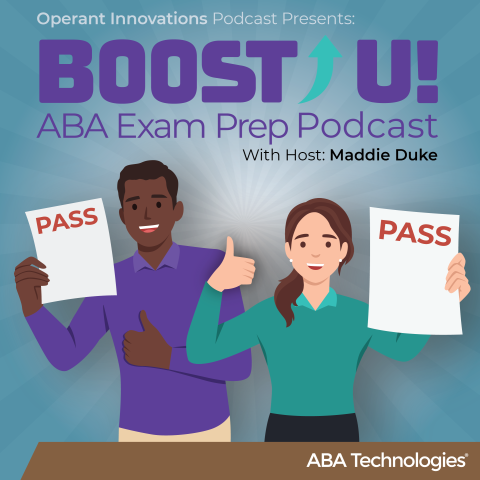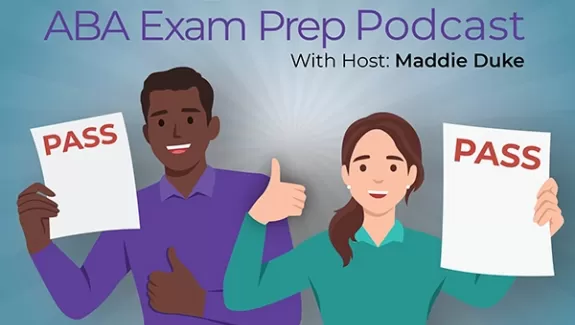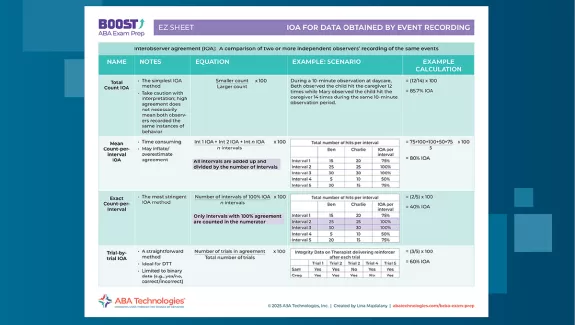
Why Behavior Analysis Certification Exam Pass Rates Matter for Students
Kristin Myers-Kemp, PhD, BCBA-D, LBA-NY
Becoming a Board Certified Behavior Analyst (BCBA®) is a significant milestone for individuals pursuing a career in behavior analysis. Achieving certification demonstrates proficiency in the field and opens doors to professional opportunities. The journey to becoming a BCBA® involves completing a rigorous education program, accruing thousands of hours of supervised fieldwork, and passing the international certification exam administered by the Behavior Analyst Certification Board (BACB). For aspiring behavior analysts, the quality of the academic program they choose to complete their coursework can make a substantial difference in their educational experience, certification exam preparedness and preparation, and potentially even future career prospects. While not the only determining factor of a program's quality, first-time pass rates are an important indicator for students when selecting a program. This blog will explain why these data matter.
The BACB® and BACB Exams
The BACB is dedicated to protecting consumers of behavior analytic services through professional credentialing. According to Johnston et al. (2014), "The focus of BACB credentialing standards is to produce ABA practitioners that meet the minimum competencies necessary to serve consumers as effectively as the field’s science and technology will allow." To achieve certification, candidates must hold a suitable degree, fulfill the behavior-analytic coursework requirement, complete the practical fieldwork hours, and pass the BACB® certification exam based on tasks outlined in the BACB Test Content Outline (TCO). In 2023, over 20,000 students qualified for the BCBA or BCaBA exams.

BACB Pass Rates
In 2014, the BACB began publishing individual university pass rate data for VCS programs at least 5 years old and had more than six examinees in that year. National first-time pass rates are calculated by dividing the number of students who passed the exam by the total number who completed it in the same year. Over the past decade, the national first-time pass rate for the BACB exam has ranged from 55-65%.
According to Dubuque and Kazemi (2022), 99.97% of students complete coursework through a Verified Course Sequence (VCS). For many students, a primary or secondary goal of enrolling in a degree program or VCS is to obtain a BACB professional credential. Though some might argue the merits of a professional certification exam as a valid measure of competence in applied behavior analysis practice, the pass rates are crucial indicators of how well a program prepares its students for the certification exam and how well it helps them achieve their ultimate professional outcomes.
Why Pass Rates Matter
Preparation: The role of a graduate degree or certificate program is to prepare students with the knowledge, skills, and abilities necessary to enter the profession of behavior analysis. Part of this preparation should necessarily involve ensuring students are prepared to pass an exam covering entry-level knowledge of behavior analysis.
Low Pass Rate—A low pass rate may indicate that students need to spend additional time, effort, and resources to learn the content independently during their program or after finishing their education and before the exam. Attending a program with a relatively low pass rate may not mean you will not pass the exam the first time, but it is an indicator that you may have to put more independent effort in to ensure you do.
High Pass Rate—This shows that students from the program are prepared to pass the exam on the first attempt. While students must put in significant effort, a high pass rate likely indicates an effective curriculum and support structures that facilitate learning.

Return on investment. Pursuing education in behavior analysis, particularly at the graduate level, involves a significant financial investment. Pass rates indicate the potential value of that investment. For example, a program with a 50% pass rate means that one-half of their students do not pass the exam the first time, so only 50% realize the payoff of their investment the first time. The pass rate may also indicate whether additional resources are likely to be necessary to see the investment pay off. That is, whether a student will need significant time and study resources outside of the program for exam-prep efforts. Pass rates may help students determine if their program offers good value for their investment and weigh the likelihood of a positive return on the investment.
Low pass rates – Indicate potential risk in terms of return on investment for tuition dollars and may indicate a need to invest time and money in supplementary resources for exam preparation.
High Pass Rate – Greater likelihood of passing the exam the first time and, therefore, greater likelihood of return on investment. Potential reduced need for exam preparation time and resources.
Professional Opportunities. Becoming a BCBA opens many career opportunities. Employers may consider the quality of the training program when hiring. Programs with high pass rates are often seen as producing well-prepared graduates, potentially enhancing job prospects for their students.
Comparing Pass Rates
As stated previously, the BACB publishes the pass rates annually for each University VCS program and the percentage of all first-time candidates who pass (national average pass rate). Using the national average pass rate as a barometer against which to measure programs may be tempting. However, doing so risks seeing this average as the ideal, and it is not. Instead, it represents all examinees, those who were adequately prepared and those who were not.
Rather than measuring programs against the national average, each program’s pass rate should be viewed independently and compared to similar programs.
In evaluating a program’s pass rate individually, one may, for example, look at the average pass rate for school X and ask if that pass rate is reasonable. If 100% of students pass, this is great, but what about pass rates below this:: 90%, 70%, 50%, 30%? Where is the cut-off at which you think that program will not likely prepare you for the exam? Be careful of self-attribution bias and consider things like program-entrance criteria when evaluating pass rates.
The second relevant comparison is how a program performs against similar programs. How does this small, in-person program compare to that small, in-person program? How does this large, online program compare to that large, online program? Comparing programs with similar characteristics will provide information about their relative strength in preparing students for the certification exams.
Bottom Line
While a good pass rate does not guarantee a student will pass the BCBA exam, and a bad pass rate does not mean a student will fail, pass rates are a valuable outcome measure of program quality. Higher pass rates suggest that a program provides effective instruction, resources, and support to help students succeed. Aspiring behavior analysts can set themselves up for a return on their investment and early career success by selecting a program with a history of success in preparing students for the certification exam.
References
https://www.ncbi.nlm.nih.gov/pmc/articles/PMC4711728/
https://www.bacb.com/wp-content/uploads/2022/01/BCBA-6th-Edition-Test-Content-Outline-240208-a.pdf
https://www.bacb.com/about/bacb-certificant-annual-report-data/
https://www.bacb.com/wp-content/uploads/2023/11/BCBA-2022-Pass-Rates-Combined-240205-a.pdf
https://pubmed.ncbi.nlm.nih.gov/36457830/
https://www.abainternational.org/vcs
https://www.bacb.com/wp-content/uploads/2020/05/BACB_Newsletter_2-13-a.pdf
Want more tips to help you pass the BCBA® Exam? Check out the BOOST U! Podcast!


